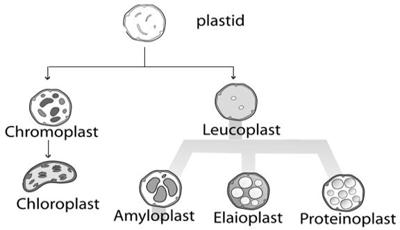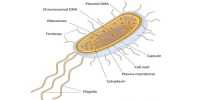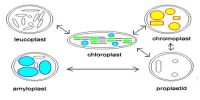The living organelle, distributed in the cytoplasm, may be pigmented or non-pigmented, which can only be found in the plant cell is called plastid.
Types of plastid: Plastid mainly, is of two types, such as-
1) Leucoplastid and 2) Chromoplastid
(1) Leucoplastid: The cells of the particular area of the plant both that are deprived of sunlight contain Ieucoplastid. They are colourless plastid (non-pigmented)
Leucoplastid is of three types:
- Amyloplast: It stores carbohydrate.
- Elaioplast: It stores lipid.
- Aleuroplast or proteinoplast: It stores protein.

(2) Chromatoplastid: The coloured plastids (pigmented) are said to be chromatoplastids.
On the basis of the presence of different pigments chromatoplastid is of two types:
a) Chromoplast
b) Chloroplast
- Chromoplast: The chromatoplastid that creates different colors other than green colour is called chromoplast, such as- Petals of flower, coloured seeds and fruits, a modified root of carrot etc.
- Chloroplast: The green parts of plants, such as- leaf tender branches, green fruits etc that contain color producing plastids are (red-carotin, yellow- zanthophyll) called chloroplast.













